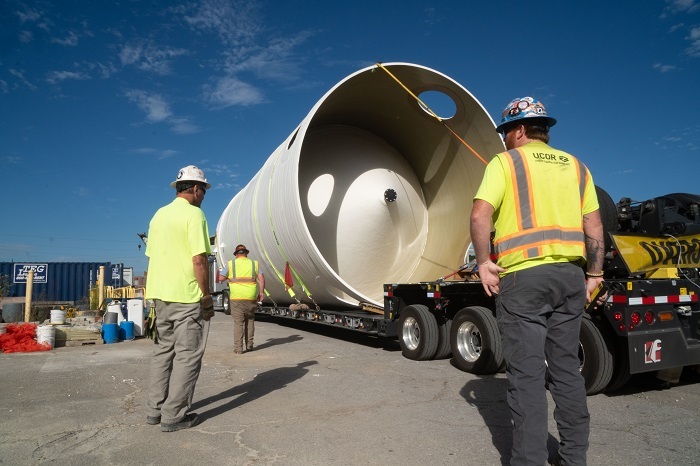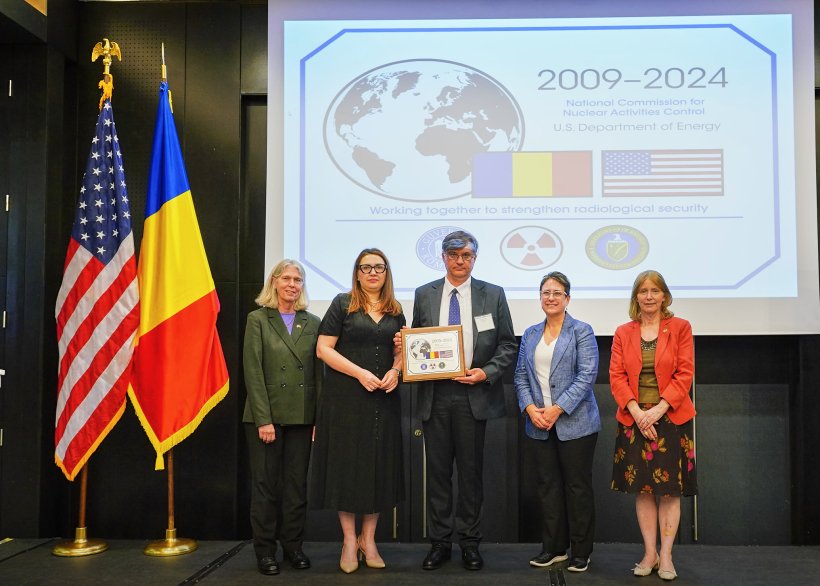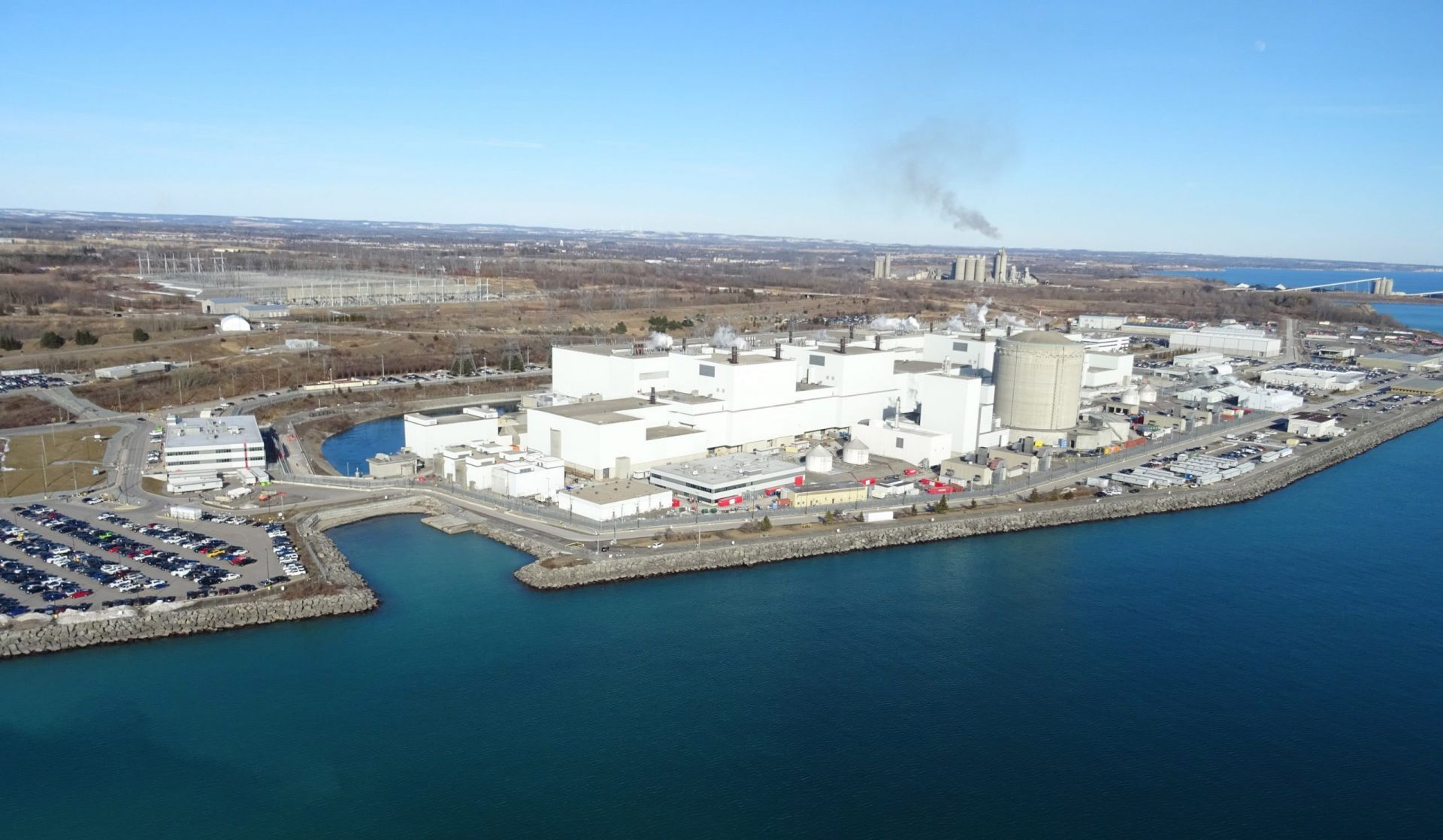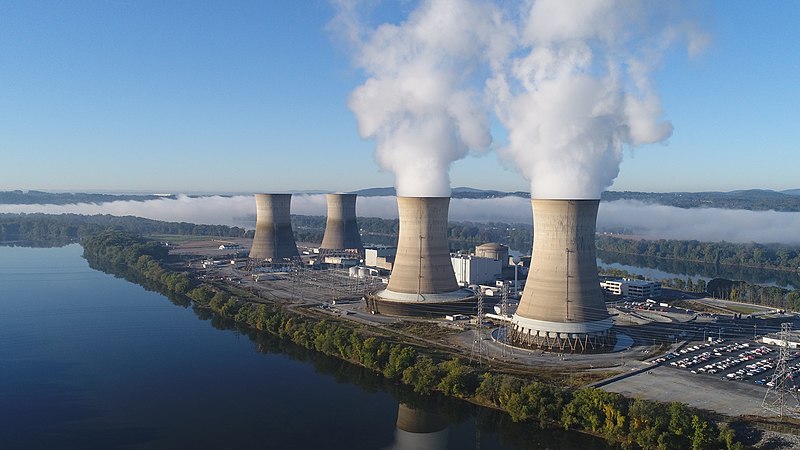Jeff Waksman (left), Project Pele program manager for DOD-SCO, and John Wagner, INL director, at the planned testing site. (Photo: DOD)
The Department of Defense announced September 24 that it has broken ground on the site at Idaho National Laboratory’s Critical Infrastructure Test Range Complex (CITRC) where Project Pele, a transportable 1–5 MWe microreactor, will be tested. The DOD’s Strategic Capabilities Office (SCO) is in charge, on a mission to prove that a mobile microreactor can help meet the DOD’s increasing demand for resilient carbon-free energy for mission-critical operations in remote and austere environments.
Workers prepare to remove from a specialized transportation trailer the first of three sludge-settling tanks for Oak Ridge’s Mercury Treatment Facility. (Photo: DOE)
Workers with the Oak Ridge Office of Environmental Management (OREM) and its contractor UCOR have finished installing the first of three large sludge-settling tanks for the Mercury Treatment Facility at the site’s Y-12 National Security Complex. The tanks, each of which will be 38 feet tall and 15 feet wide with a capacity of 36,000 gallons, provide a visible sign of ongoing progress on the facility where much of the construction has so far been below ground.
A still shot from the Senate ENR Hearing to Examine Fusion Energy Technology Development.
Hours before the Senate Committee on Environment and Natural Resources (ENR) opened a scheduled September 19 hearing on fusion energy technology development, CNN published an article titled “The US led on nuclear fusion for decades. Now China is in a position to win the race.” The article was entered into the hearing record, but senators had already gotten the message.
From left, NNSA administrator Jill Hruby; state secretary Ana Tinca of the Romanian Ministry of Foreign Affairs; CNCAN president Cantemir Ciurea-Ercau; ORS director Kristin Hirsch; and U.S. ambassador Kathleen Kavalec.(Photo: NNSA)
The U.S. Department of Energy’s National Nuclear Security Administration and Romania’s National Commission for Nuclear Activities Control (CNCAN) recently celebrated 15 years of collaboration in advancing radiological security.
The Darlington nuclear power plant. (Photo: OPG)
Ontario Power Generation’s expansive refurbishment project on its four 878-MWe CANDU units at the Darlington nuclear power plant is proceeding faster than expected, OPG announced on September 17.
Heat pipes transfer heat out of the eVinci microreactor’s core and allow for air cooling without using water or pressurized gas. (Photo: DOE)
Westinghouse Electric Company has completed the front-end engineering and experiment design (FEEED) for a prototype microreactor at Idaho National Laboratory, the Department of Energy recently announced. The one-fifth scale version of eVinci, Westinghouse’s 5-MWe sodium-cooled heat pipe design, is one of three reactors that could be tested at the National Reactor Innovation Center’s (NRIC) DOME test bed “as early as 2026,” the DOE said.
The plenary at the 68th General Conference. (Photo: IAEA/ A. Barber Huescar)
Eleven countries have been newly elected to serve on the International Atomic Energy Agency’s 35-member Board of Governors for the 2024–2025 term. The election took place on September 19 at the plenary session of the 68th IAEA General Conference.
Idaho National Laboratory employees consult on a microgrid at Utah’s Dugway Proving Ground. Two solar projects were selected for development on INL land. (Photo: INL)
On July 28, 2023, the Department of Energy launched its Cleanup to Clean Energy initiative, an effort to repurpose underutilized DOE-owned property—portions of which were previously used in the nation’s nuclear weapons program—into the sites of clean-energy generation.
Crews demolished a former chemical storage area at the Hanford Site’s Reduction Oxidation Plant. (Photos: DOE)
Workers with the Department of Energy Office of Environmental Management’s contractor Central Plateau Cleanup Company recently demolished a former chemical storage area at the Reduction Oxidation Plant, one of five former plutonium production facilities at the Hanford Site.
Before shutdown of the plant, the working cooling towers of TMI-1 are on the right. The dormant cooling towers on the left are for Unit 2, which was permanently closed because of the 1979 accident. (Photo: Constellation Energy)
Nuclear powerhouse Constellation announced today the signing of a 20-year power purchase agreement with Microsoft that will pave the way for the restart of Three Mile Island Unit 1—under a new name to honor Chris Crane, former chief executive of Exelon when Constellation was part of the larger company.











 Regardless of who is sitting in the Oval Office next year, the Department of Energy’s Office of Environmental Management needs to take a close look at itself and “launch a comprehensive review of all aspects of the EM program,” according to a new report from the Energy Communities Alliance, which represents communities adjacent to or near DOE nuclear cleanup sites.
Regardless of who is sitting in the Oval Office next year, the Department of Energy’s Office of Environmental Management needs to take a close look at itself and “launch a comprehensive review of all aspects of the EM program,” according to a new report from the Energy Communities Alliance, which represents communities adjacent to or near DOE nuclear cleanup sites.




